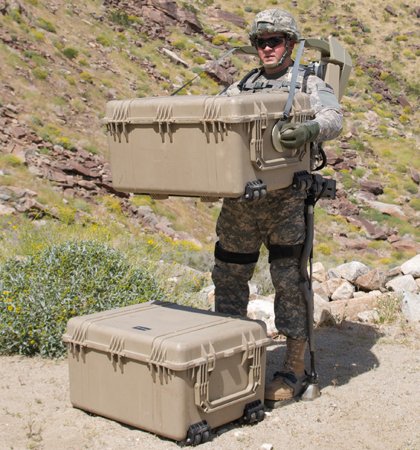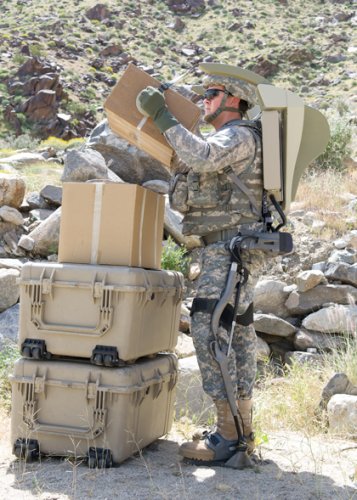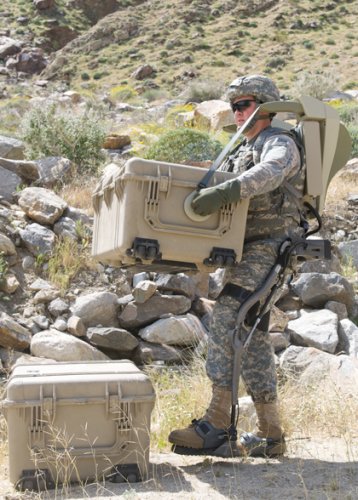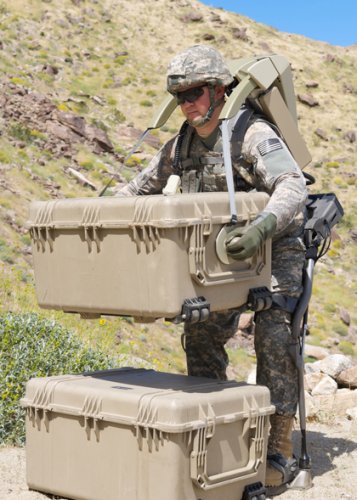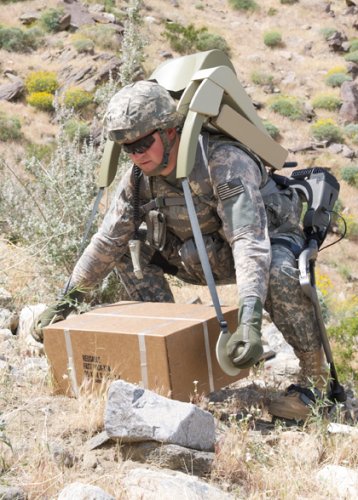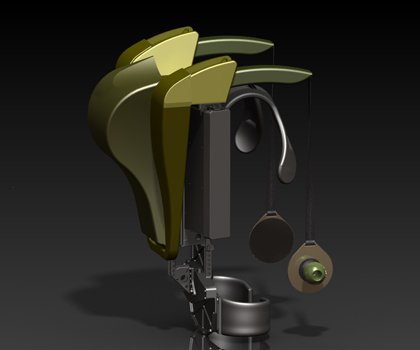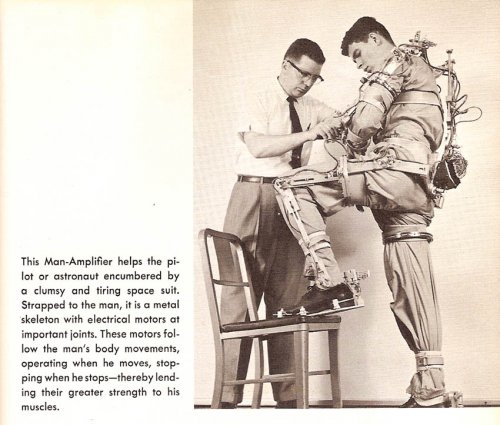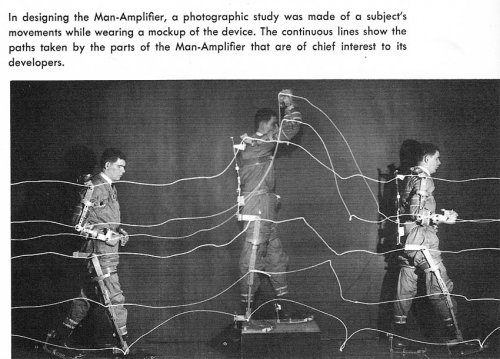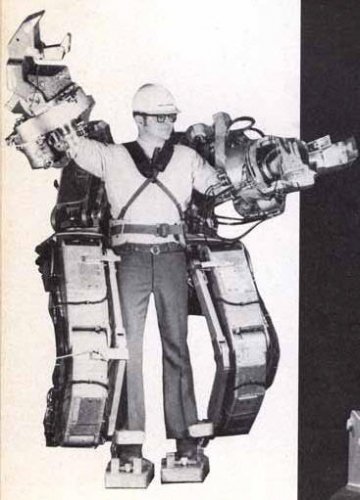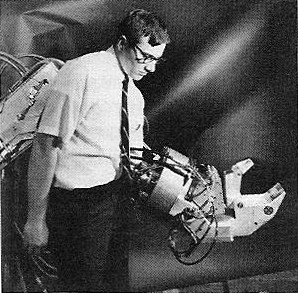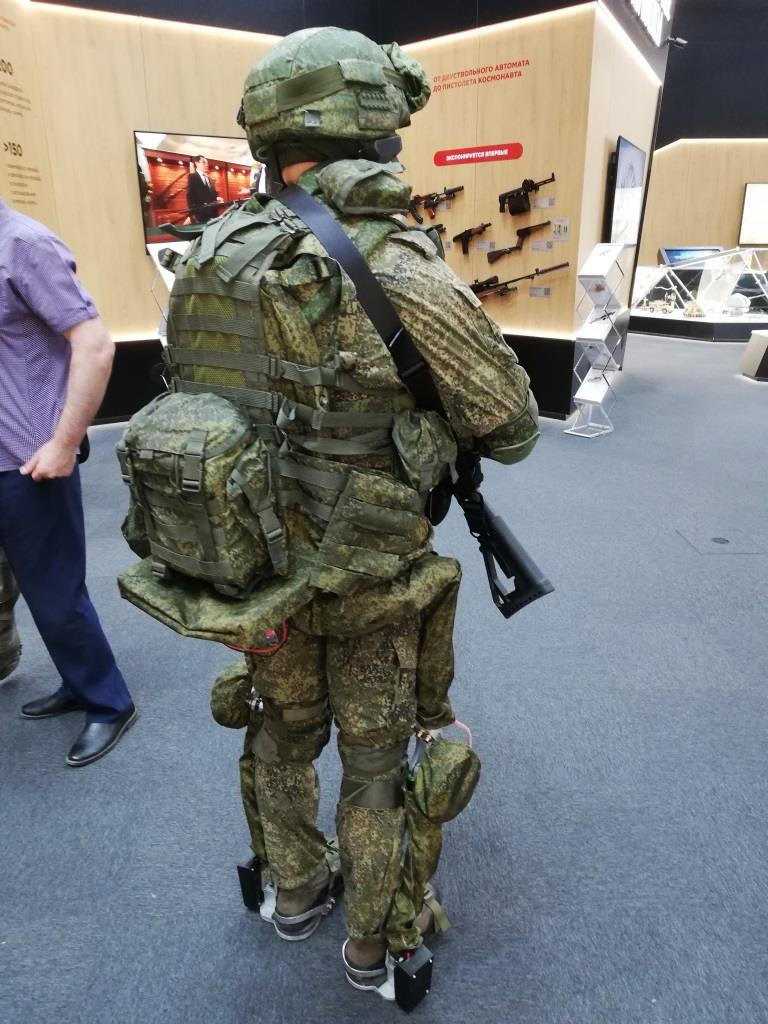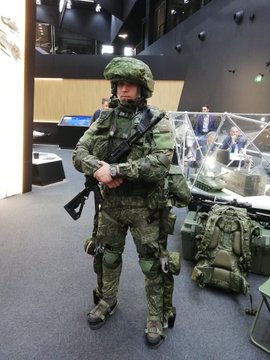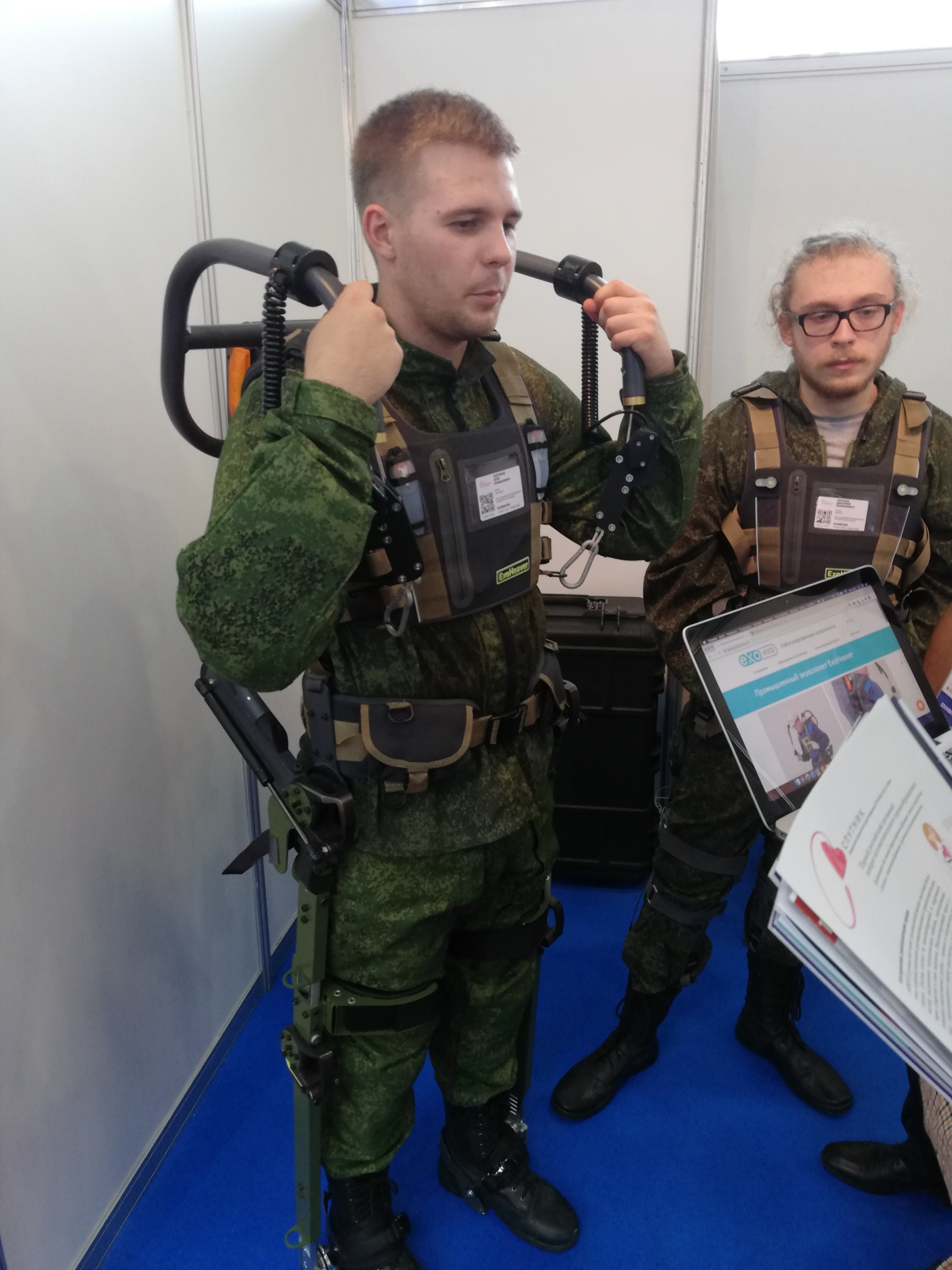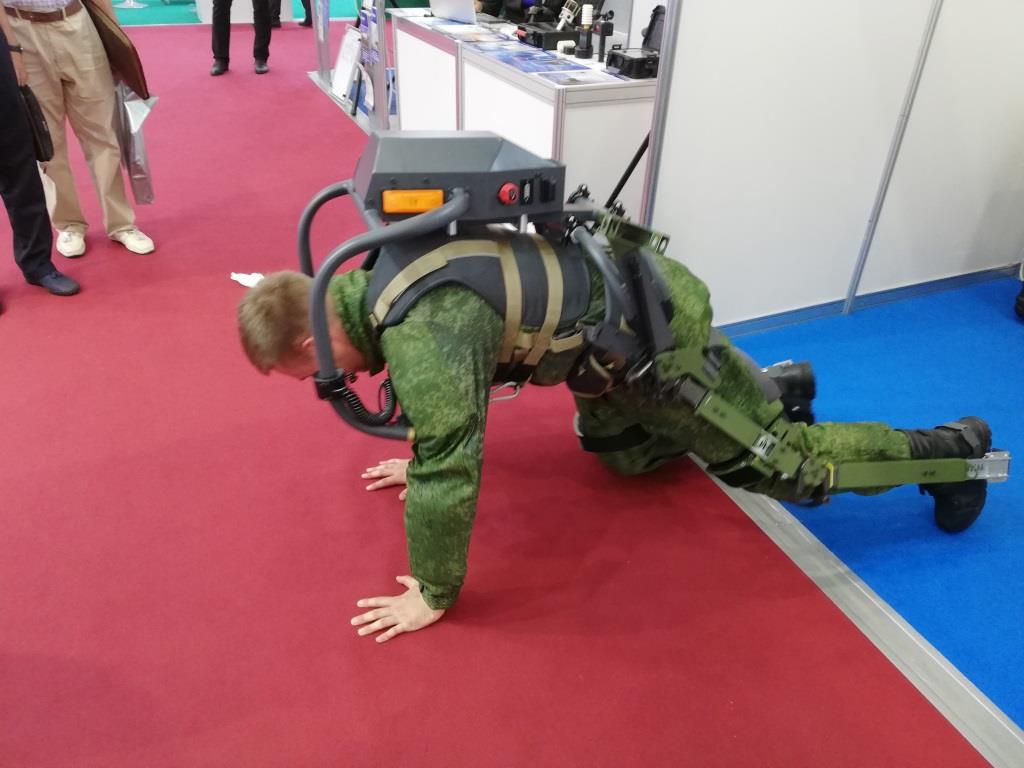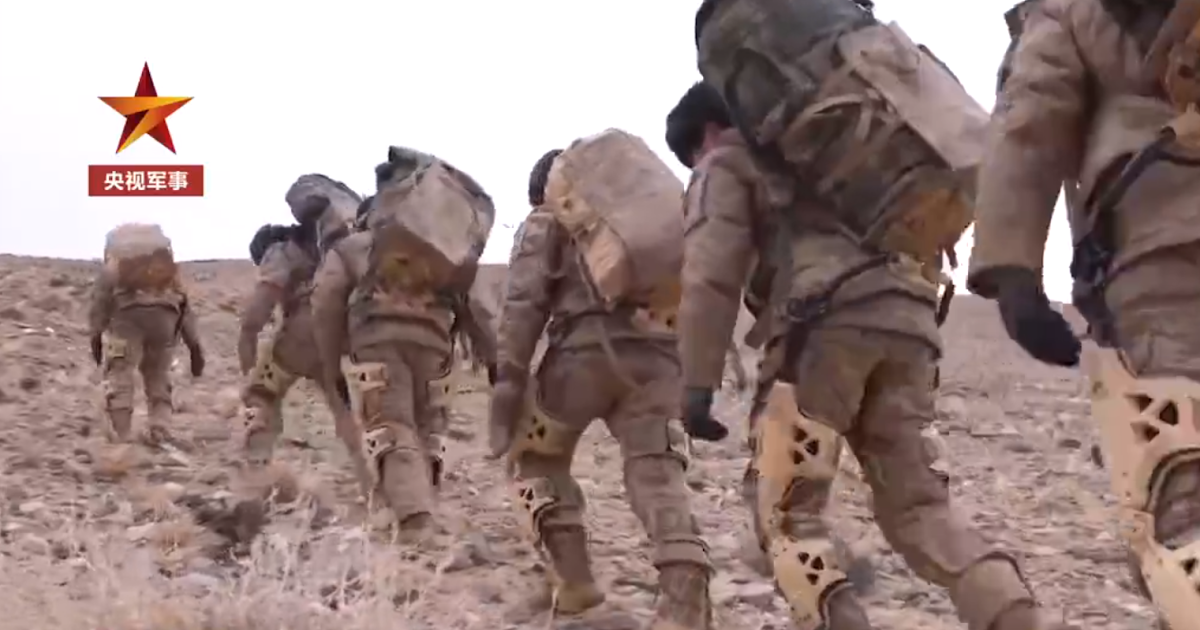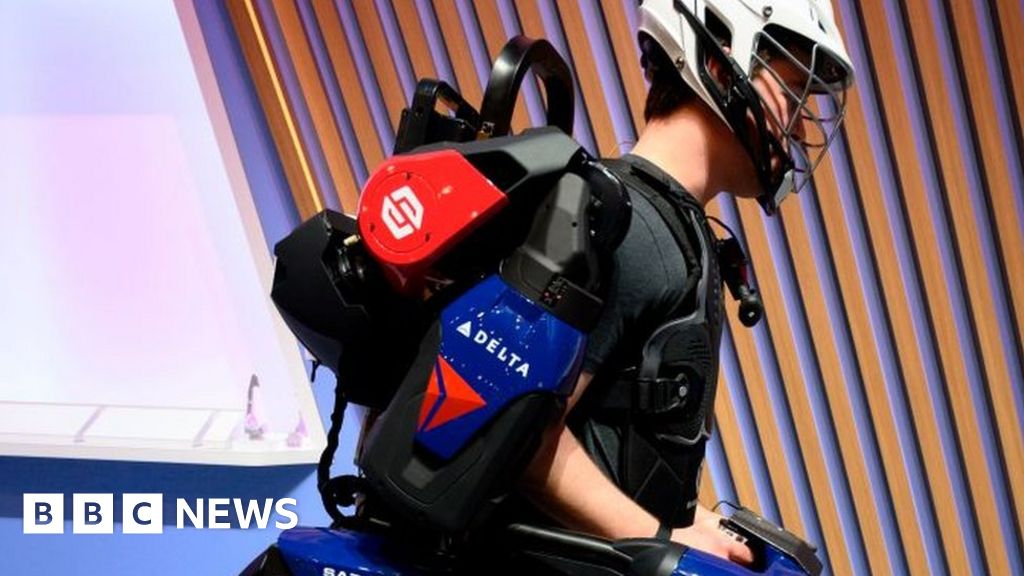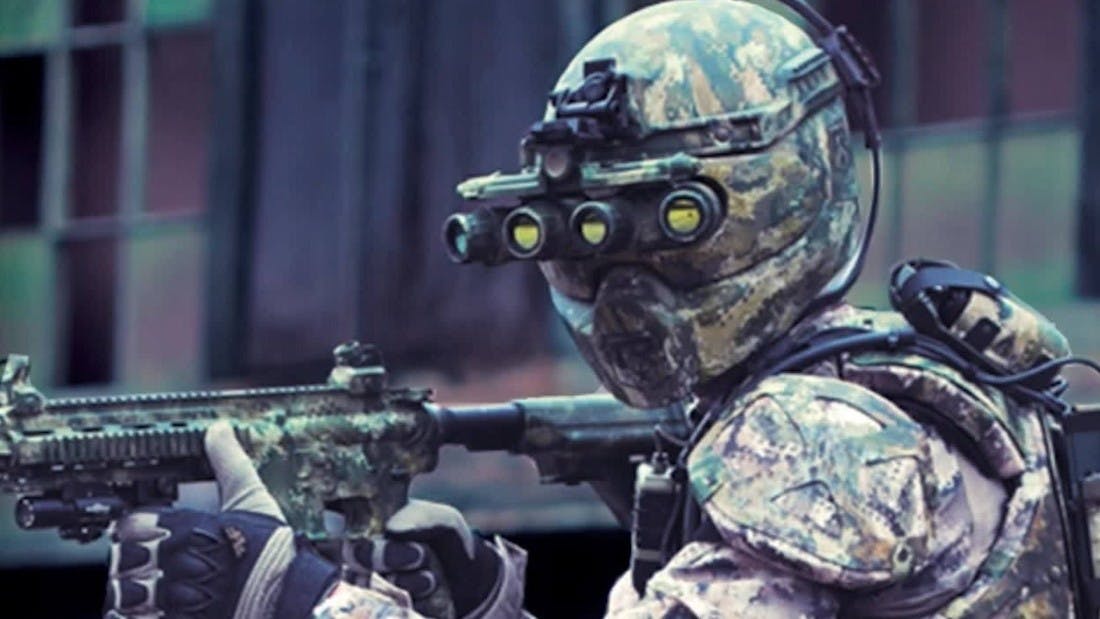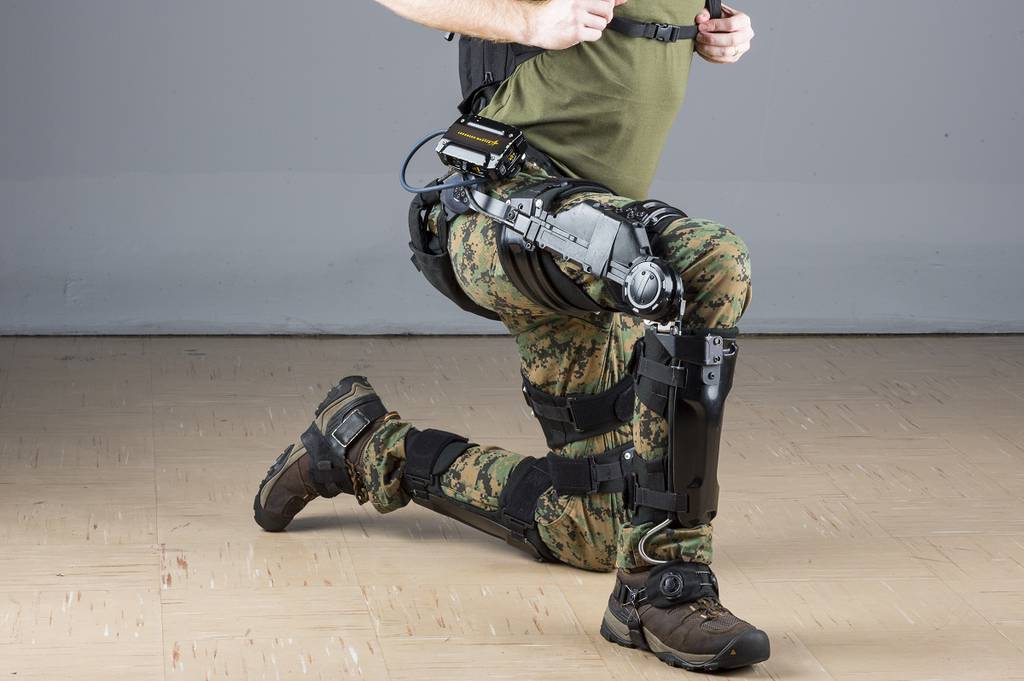Lockheed Martin HULC (Human Universal Load Carrier) exoskeleton
Source:
http://www.lockheedmartin.com/products/hulc/index.html
Videos of Lockheed Martin HULC exoskeleton
http://www.youtube.com/watch?v=kat8I5UM_Vs
http://www.youtube.com/watch?v=hWumbs9MQdM
http://www.youtube.com/watch?v=KZ_qR8zCLDc
Lockheed Martin HULC product cards:
http://www.lockheedmartin.com/data/assets/mfc/PC/MFC_HULC_PC.pdf
http://www.lockheedmartin.com/data/assets/mfc/PC/MFC_HULC_PC2.pdf
Dismounted Soldiers often carry heavy combat loads that increase the stress on the body leading to potential injuries. With a HULC exoskeleton, these loads are transferred to the ground through powered titanium legs without loss of mobility.
The HULC is a completely un-tethered, hydraulic-powered anthropomorphic exoskeleton that provides users with the ability to carry loads of up to 200 lbs for extended periods of time and over all terrains. Its flexible design allows for deep squats, crawls and upper-body lifting. There is no joystick or other control mechanism. The exoskeleton senses what users want to do and where they want to go. It augments their ability, strength and endurance. An onboard micro-computer ensures the exoskeleton moves in concert with the individual. Its modularity allows for major components to be swapped out in the field. Additionally, its unique power-saving design allows the user to operate on battery power for extended missions. The HULC’s load-carrying ability works even when power is not available.
Lockheed Martin is a leading provider of advanced technology solutions for the Warfighter including ground Soldier systems such as wearable situational awareness equipment and mobility assistance systems. Future advancements in exoskeleton technologies will focus on specific user communities, shifting energy and performance requirements. Lockheed Martin is also exploring exoskeleton designs to support industrial and medical applications.
Source:
http://www.lockheedmartin.com/products/hulc/index.html
Videos of Lockheed Martin HULC exoskeleton
http://www.youtube.com/watch?v=kat8I5UM_Vs
http://www.youtube.com/watch?v=hWumbs9MQdM
http://www.youtube.com/watch?v=KZ_qR8zCLDc
Lockheed Martin HULC product cards:
http://www.lockheedmartin.com/data/assets/mfc/PC/MFC_HULC_PC.pdf
http://www.lockheedmartin.com/data/assets/mfc/PC/MFC_HULC_PC2.pdf
Attachments
-
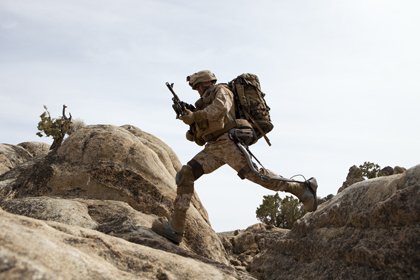 MFC_HULC_Photo1_m.jpg107.6 KB · Views: 362
MFC_HULC_Photo1_m.jpg107.6 KB · Views: 362 -
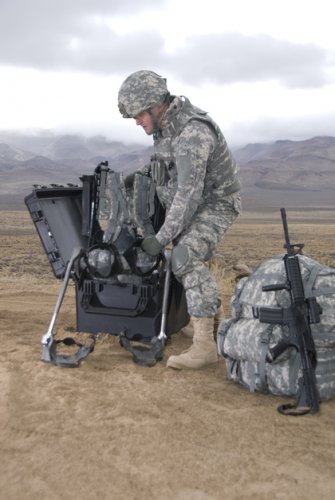 MFC_HULC_Photo08_m.jpg197.7 KB · Views: 27
MFC_HULC_Photo08_m.jpg197.7 KB · Views: 27 -
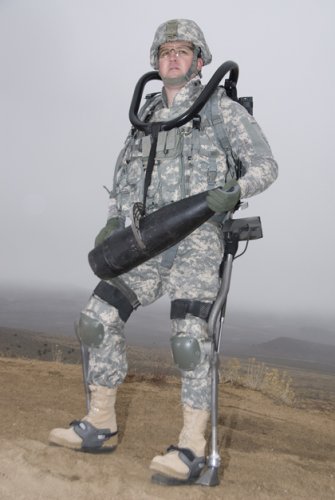 MFC_HULC_Photo07_m.jpg181.1 KB · Views: 32
MFC_HULC_Photo07_m.jpg181.1 KB · Views: 32 -
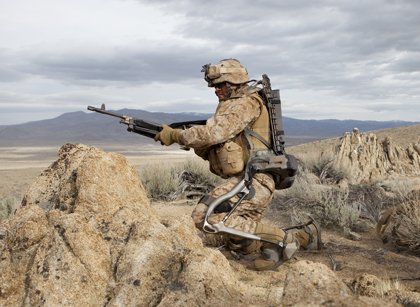 MFC_HULC_Photo6_m.jpg154.3 KB · Views: 330
MFC_HULC_Photo6_m.jpg154.3 KB · Views: 330 -
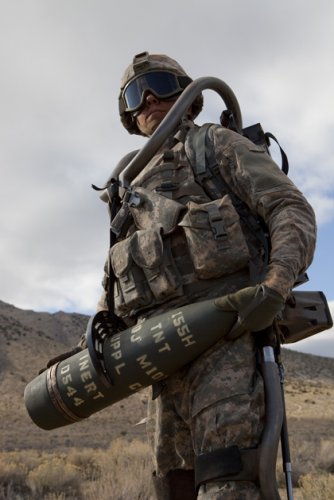 MFC_HULC_Photo4_m.jpg190.6 KB · Views: 338
MFC_HULC_Photo4_m.jpg190.6 KB · Views: 338 -
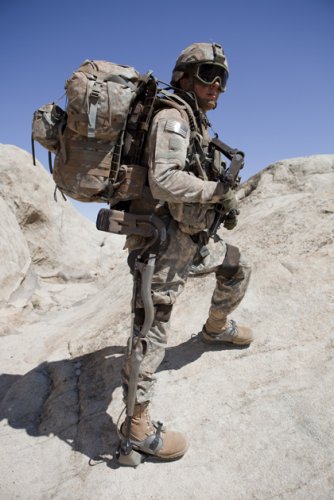 MFC_HULC_Photo3_m.jpg236.4 KB · Views: 344
MFC_HULC_Photo3_m.jpg236.4 KB · Views: 344 -
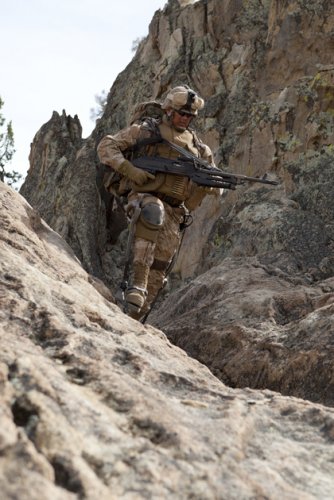 MFC_HULC_Photo2_m.jpg269.3 KB · Views: 351
MFC_HULC_Photo2_m.jpg269.3 KB · Views: 351

